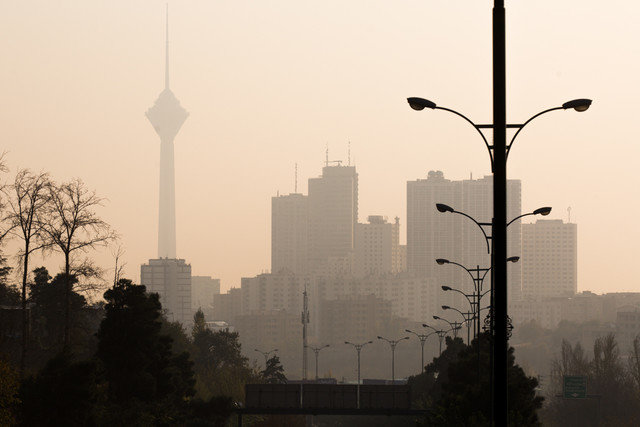Plan approved to fight SDSs in Tehran province

TEHRAN — A plan to tackle sand and dust storms (SDSs) hitting Tehran province has been approved, said the provincial department of environment’s (DOE) deputy director for technical affairs.
.Three main priorities of the plan include developing SDSs monitoring stations and equipping weather forecast stations, eliminating internal SDSs hotspots and promoting public participation, ISNA quoted Mehrdad Katal-Mohseni as saying on Saturday.
'To eliminate the SDS hotspots, all the responsible bodies must cooperate, for instance, the DOE identifies the areas prone to generating dust, the Oil Company spreads mulch and Water and Wastewater Company supplies water rights of natural resources through wastewater treatment systems'
The Cabinet has approved a guideline to eliminate SDSs throughout the country in the Iranian calendar year 1395 (March 2016-March 2017), Katal-Mohseni said, adding that the guideline recommends establishment of headquarters to deal with the issue, adopting policies and providing solutions at national, regional and provincial levels.
In order to act on the Cabinet’s guideline, national centers for combating SDS are responsible for monitoring the implementation process of SDSs plans in short or long term periods and coordinating related organizations and executive bodies, he highlighted.
Accordingly, Tehran province headquarters for combatting sand and dust storms formed to combat sand and dust storms hitting the province in May, which prepared a draft plan aimed to combat sand and dust storms hitting the capital.
Finally, some 50 tasks and projects for dealing with SDSs in Tehran have been drawn up and assigned to some 15 executive agencies, he highlighted, adding that Tehran’s working group on combating air pollution was the responsible body to approve the plan, Katal-Mohseni stated.
“Currently, three projects are prioritized and planned to be implemented as soon as possible,” he added.
Touching on the fact that implementation of the plans requires high amount of budget, he said that “in this regard we need financial assistance.”
He went on to say that “Eliminating the issue in Tehran requires a longer period due to the sever decline in surface water and permanent droughts.”
Developing SDSs monitoring stations
Katal-Mohseni further explained that the first measure to take is developing SDSs monitoring stations and detecting atmospheric conditions of the capital, which will be done by launching an online system that collects SDSs information instantly and after analysis, reports to related organizations and the public.
The responsible body for development of SDSs monitoring stations in Tehran is DOE, also, the Meteorological Organization is tasked with equipping the weather forecast stations, he stated.
Identifying internal SDS sources
He also noted that identifying, preventing and tackling the internal SDS hotspots is the second step toward this issue, which a biological method can be applied to go through.
To do so, plant species compatible with water and climate characteristic of the regions will be identified and cultivated, while priority is given to the damaged areas which have been known as the SDS hotspot, he suggested.
“Planting trees and seedlings in areas susceptible to dust generation is on Tehran provincial department of forests, range, and watershed management organization,” Katal-Mohseni said, adding that spreading mulch is the other method addressed in the plan to fight with the SDSs, which will be applied by the National Oil Company.
To eliminate the SDS hotspots, all the responsible bodies must cooperate, for instance, the DOE identifies the areas prone to generating dust, the Oil Company spreads mulch and Water and Wastewater Company supplies water rights of natural resources through wastewater treatment systems, he noted.
Public participation
Katal-Mohseni went on to say that no project has been successfully conducted without the participation of the people, so, the third priority is the issue of education and engagement of public.
So, some plans have been prepared to first inform the people, then educate them and involve them in eradicating the issue, he concluded.
Sand and dust storms
Sand and dust storms are common phenomena in arid and semi-arid areas. These phenomena can damage infrastructures, telecommunications and crops, affect transportation through reduced visibility, and cause tremendous economic losses. Carrying diversified allergens, dust storms also significantly threaten human health.
SDSs sources are including drought, high temperature, low precipitation, human-induced soil degradation, human influences and net primary productivity loss.
Since 2005, SDS frequencies and intensities have increased significantly in Iran due to low precipitation rate and the resulting drought.
FB/MQ/MG
Leave a Comment